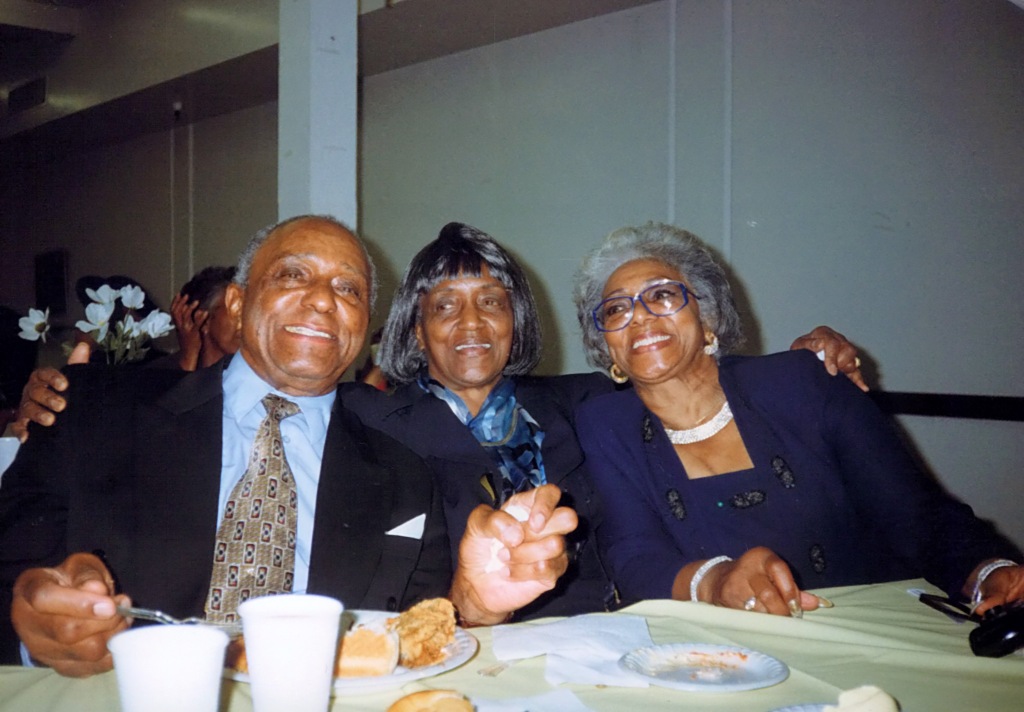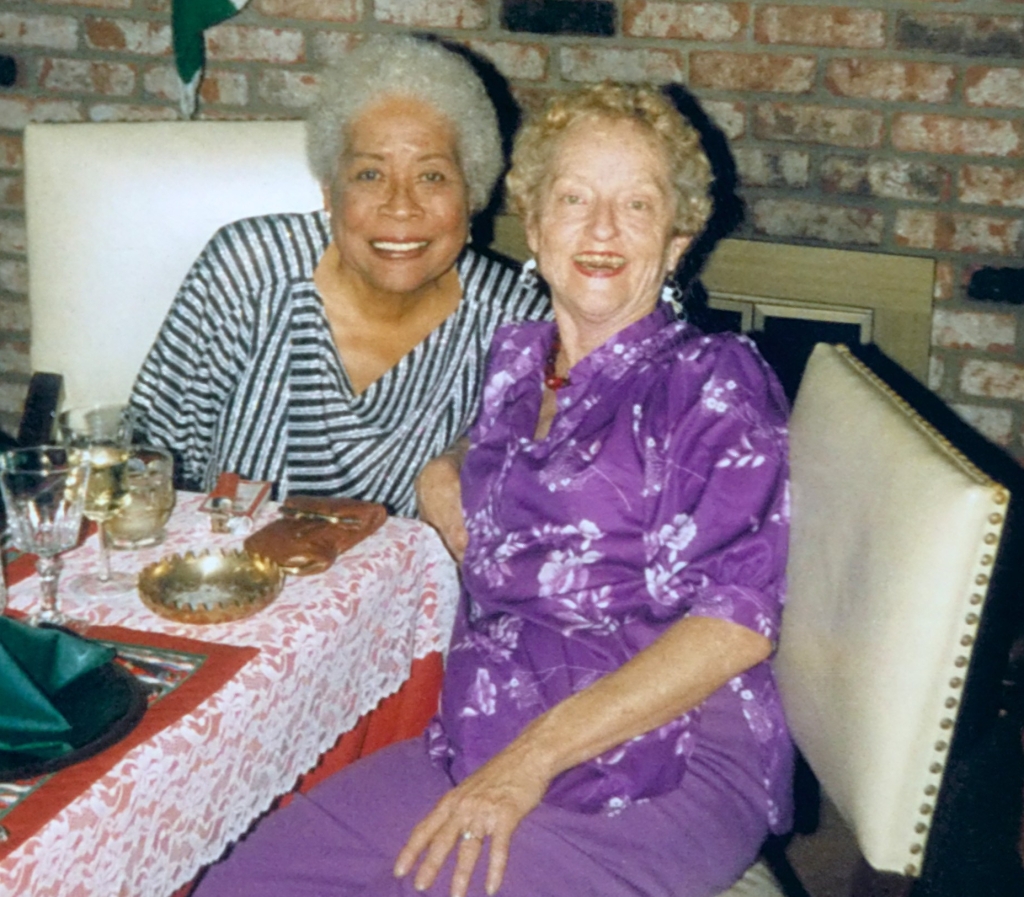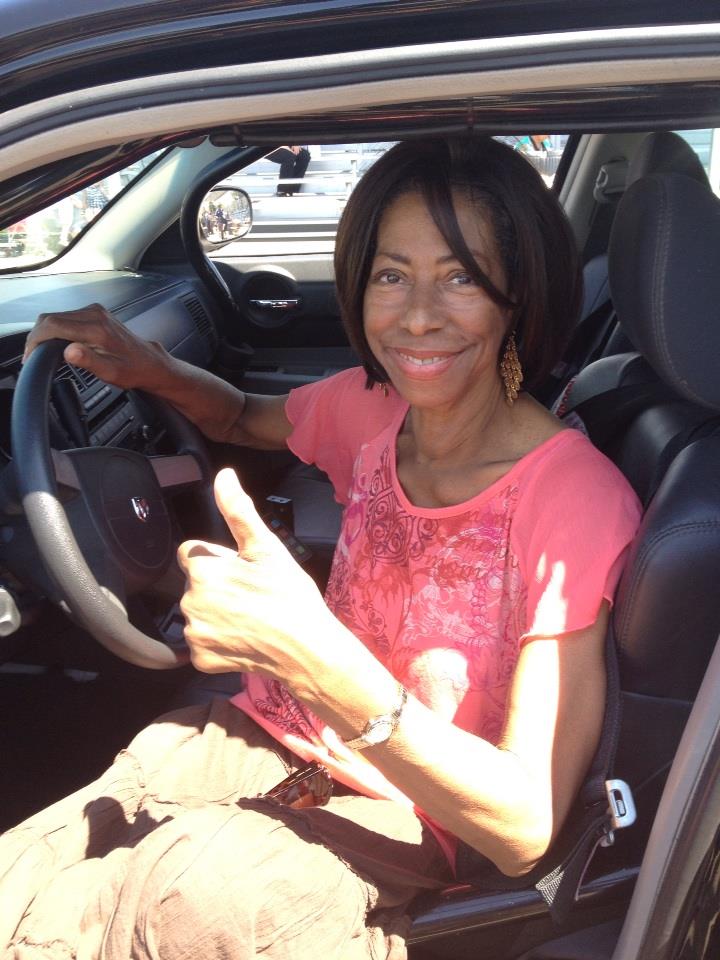I had been working on this post about my earliest lessons about grief for a week when George Floyd’s death happened. I needed to stop to attend to this new sorrow and its implications for George Floyd’s family, for the country, for the world, and for me personally. The more I attended to this new sorrow, the more I realized that this sorrow isn’t so new after all. You see, I first learned about grief by attending many funerals during my childhood on both my black and white sides of the family, and funerals were also where I got my first lessons about race.
My maternal grandfather came from a family of eleven kids and my paternal grandmother came from a family of five. When considering my large extended family of aunts, uncles, and cousins once removed, it seemed someone was always dying. I remember sitting at these funerals feeling sad, not because I would miss the person in the casket up front, as the deceased was almost always a relative that one of my parent’s had grown up with but whom I had only met once or twice, if that; I was sad because I hadn’t had the opportunity to know them like the other people in the room who were beside themselves with grief.
I learned to respect grief as sacred, as something you put on your most somber-looking Sunday best and show up for, something you witness, but I didn’t really get it; grief wasn’t personal (yet).
Because my family was spread out geographically with a contingent still in Los Angeles, another contingent out venturing further into the suburbs of Riverside and San Bernardino, and another contingent sprinkled throughout the country, funerals became stand-ins for reunions. Every time someone died, we’d say “next time, we won’t meet this way!” Then, inevitably, the next person would go. As a young person, I remember looking forward to seeing the cousins who I would only see on these occasions and hoping that I would remember their names. Like an ambassador prepping for a state dinner, I’d spend the long car ride into downtown L.A. getting briefed by my mom and dad about how we were related to everyone, taking care to memorize identifying personal characteristics and tidbits of family history—like how my mom’s grandma would feed the cousins mayonnaise sandwiches on Wonder bread because that’s what they could afford or how my dad’s uncle Bob, the prominent surgeon, would carve the Thanksgiving turkey while dictating each precise cut of his scalpel.
Upon arriving at the church where the funeral was to take place, my most visceral memory is being unsure of where I belonged. At a black relative’s funeral, I remember surveying the fashionable church-lady hats, elegant high heels, and the dark oversized chic sunglasses hiding the full display of tears as I hugged relatives I barely knew. Taking my seat in one of the hard pews, stomach already grumbling, I remember scanning the mourners for a face that looked like mine. There were all shades of dark chocolate, mocha, caramel, and deep tan, but often, my brother and sister were the only other lemon custard-colored, curly haired people in the crowd. Though my black family always embraced me as one of their own, the fact that I didn’t look like them, talk like them, share their experience, or love the person we were there to mourn, made me feel “other” at a very early age.

Funerals on my white side were no different. We were the only yellow ones in a sea of white faces. Notwithstanding that my dad’s mom discouraged my parent’s interracial marriage by advising them “not to have kids because we would turn out ‘blotchy,’” my extended white family also accepted me. But when I had little to contribute to conversations about recent vacations to far-flung destinations, got tripped up trying to follow the unfamiliar Catholic funeral mass, or found my thoughts about the latest op-ed in some paper I’d never heard of wanting, our class and religious differences made me feel that I wasn’t one of them either.
I was left to navigate race all by myself. Perhaps my parents thought that love would conquer all, as it had for them—at least on the surface. After all, they got married in 1976, only nine short years after the Loving decision legalizing interracial unions. My parents banked on our burgeoning multi-cultural society (particularly in diverse Southern California), and their offspring’s racially ambiguous good looks, personal achievement, and obliviousness to history would somehow keep us safe. And, in some ways it did, but it also kept me ignorant and outside of a fuller picture of the black experience, instead of awakening my consciousness and establishing my belonging in it. That too, I’ve had to do for myself.
And now, with the deaths of Ahmaud Arbery, George Floyd, Breonna Taylor, and others we are becoming aware of day-by-day, like Manuel Ellis, I find myself at yet another series of funerals for people who I wished I knew but who I’ll never have the chance to know. Yet suddenly, this grief feels deeply personal even if I have no memories of how Ahmaud’s laugh sounded, what George’s favorite color was, or what Breonna would have wanted for her birthday.

I, along with many of you, found myself screaming at the TV while I watched the video of George Floyd’s murder. I’ve felt horrified, stricken, and so heavy ever since. I’ve been inspired by the global movement of protest in response even as I wish that the actions were all peaceful. Even as I question the use of tear gas and flash bangs to control crowds, I’m terrified for my brother who has been called off of his regular beat as a highway patrol officer and been sent to the front lines of the protests where he’s been yelled at, cursed at, spit upon, and faced personal threats simply because of what his uniform represents. As a mother of a perfectly brown, curly haired child, I’m committed to do everything I can to make his experience different. Yet, while I understand the “us” versus “them,” “you’re with or against us” rhetoric on social media, I’ve felt torn by the way this dichotomy conflicts with my lived experience.
To be honest, I find myself scanning the crowd of mourners just like when I was a kid, not so much for people who look like me, but for people who share my experience of someone who embodies the complexities and contradictions of our collective racialized experience hoping to find someone who knows, at a deeply personal and physical level, that the killing of black people at the hands of police MUST STOP and that what we need is reconciliation rather than revenge.

Perhaps this sentiment arises from the dual burden that I, as a biracial person, feel forced to pick a side and at the same time be a bridge builder between the two.
Picking a side is not so simple. The history of the one drop rule which considers anyone with black ancestry to be black—a uniquely America phenomenon I might add—leaves those of us who don’t “look black” (which is in and of itself subjective, arbitrary, and changes depending on context and region and who’s asking/telling) with the privileged yet horrid choice of whether to “out” ourselves as members of the oppressed group, with all of the benefits and burdens this entails. Many black people, including members of my own family facing systemic oppression and shut out from any other way to assimilate and gain opportunities, counted the cost of “passing” as white as a survival strategy, even if the price was cutting off pieces of themselves and pretending their families never existed. This necessitated a deep sense of internalized racism. For those in my family not light enough to pass, many chose to assimilate to the best of their ability and not rock the boat by differentiating themselves from those who chose a different path. In a recent conversation with a family member who lived through the Civil Rights Movement and the Watts Riots about how they felt about George Floyd’s death: “Awful! It’s just wrong what they did to that man. People have a right to protest, but those looters make the rest of us look bad. I’m not a groupie, you’ll never catch me out there marching.” Case in point.
And, as my consciousness evolves, I have to accept that in unconscious, subtle, and insidious ways I passed too because that was what was passed down to me as the means of survival. This moment, however, is asking me to do a deeper analysis of my personal history, challenging me to reconfigure my allegiances, and inviting me into deeper action.
In a speech Malcolm X gave on May 5, 1962 at the funeral service of Ronald Stokes in Los Angeles, who was killed by the LAPD he said,
Who taught you to hate the texture of your hair? Who taught you to hate the color of your skin? To such extent you bleach, to get like the white man. Who taught you to hate the shape of your nose and the shape of your lips? Who taught you to hate yourself from the top of your head to the soles of your feet? Who taught you to hate your own kind? Who taught you to hate the race that you belong to so much so that you don’t want to be around each other? No… Before you come asking Mr. Muhammad does he teach hate, you should ask yourself who taught you to hate being what God made you.
White supremacy teaches us this—that white is right and everyone else is wrong. Unfortunately, neither of my largest influencers in early life, my parents nor my religious experience, disrupted this racist posture, so I had to look to others to fill in this gap.
James Baldwin, wrote this in response to an incident at the 1956 Conference of Negro-African Writers and Artists in Paris, where the French chairperson questioned the head of the US delegation on why he considered himself Negro, since he certainly did not look like one: “He is a Negro, of course, from the remarkable legal point of view which obtains in the United States, but more importantly…he was a Negro by choice and by depth of involvement–by experience, in fact.”
Acknowledging that the way any of us look and that fact should somehow define where we are in the pecking order of power is the very root of the problem, James Baldwin’s definition of “being black by choice and depth of involvement,” certainly challenges me, not to cut off any parts of my experience, but to bring all of it to the struggle for racial justice.
Which then, makes the invitation to be a bridge builder in the spaces between all my identities one that is hard to refuse given the urgency of the present moment. If I learned anything from all those funerals I went to, it is that ultimately, I am from both communities regardless of whether the vestiges of racism make those claims feel incomplete, complicated, and inadequate. I also learned that you show up, you join the mourners no matter what your relationship was with the dead, you cry together, you laugh together, you eat together, you witness one another. This is how we get through.



Thank you, Angeline, for sharing yourself so deeply. I find myself responding to conservative friends and family on Facebook, mainly trying to get them to admit that they should not be posting falsehoods and trying to get them to engage in rational discussions of policy and strategies for change. I have come to realize that I also need to write in a more structured way instead of using all my energy this way. You are an inspiration and I will be reviving my long-dormant blog soon. Thank you, again. Michael
LikeLike
Thank you Michael and I’m so glad to hear you’re reviving your blog! I’m looking forward to reading it!
LikeLike